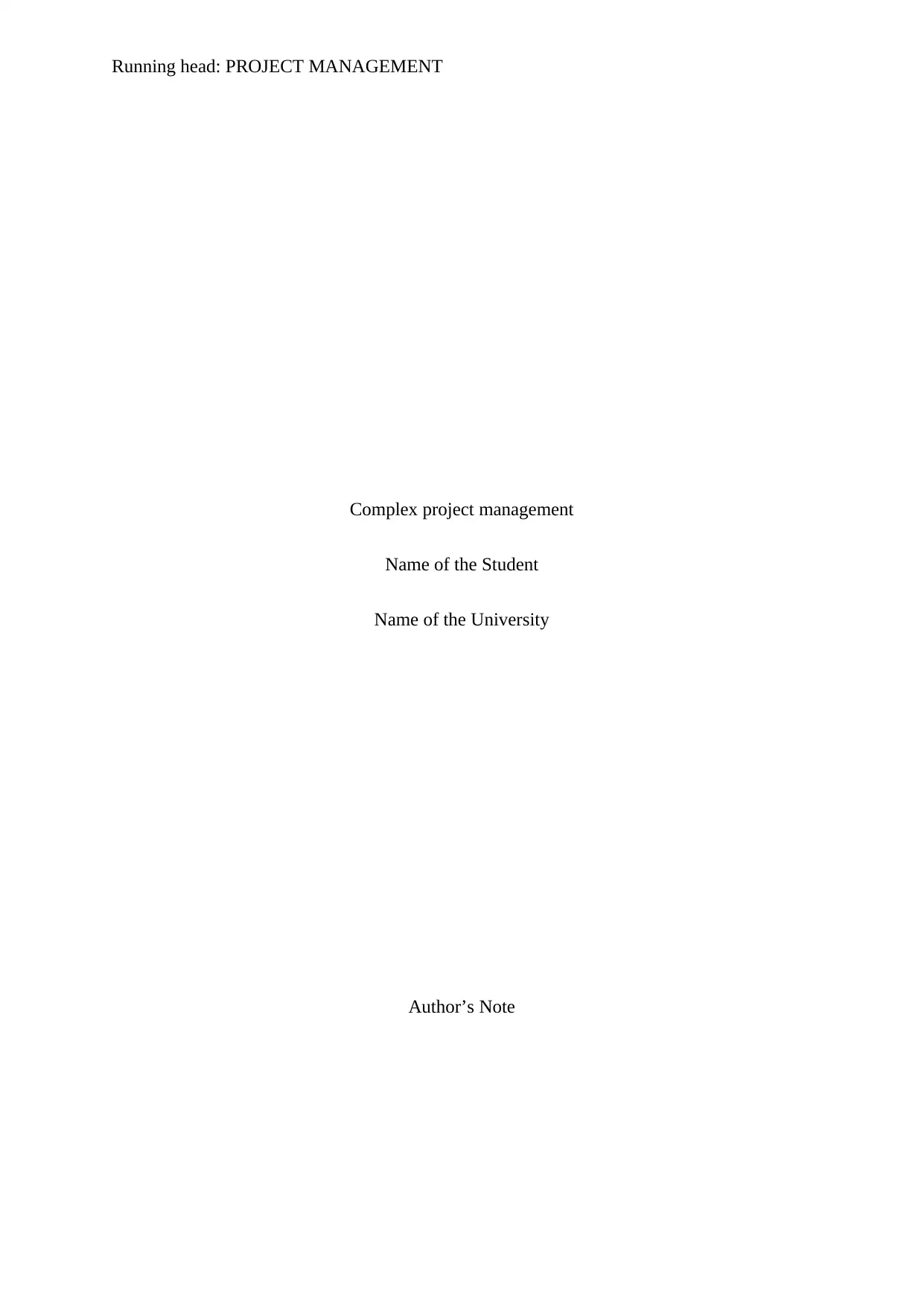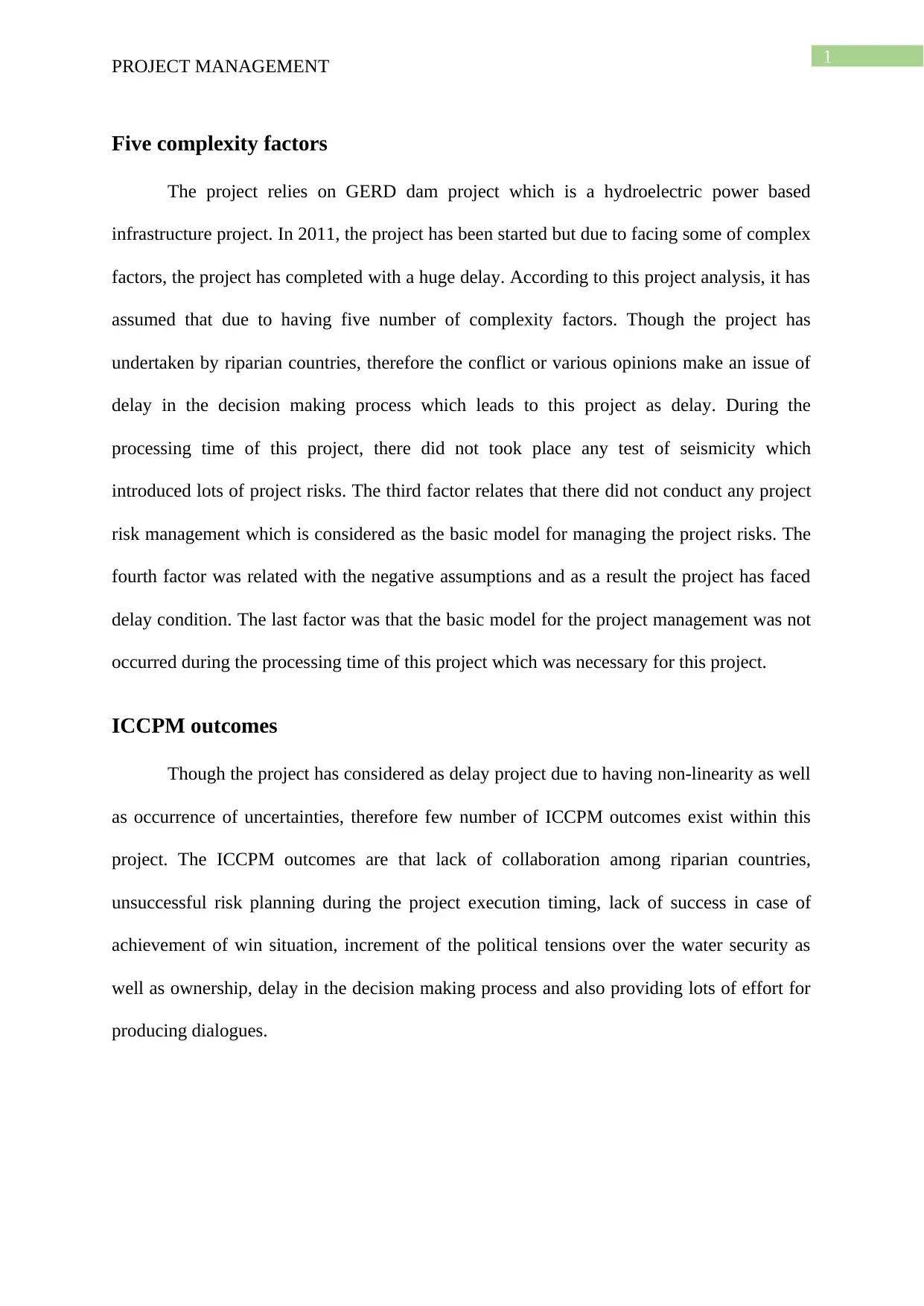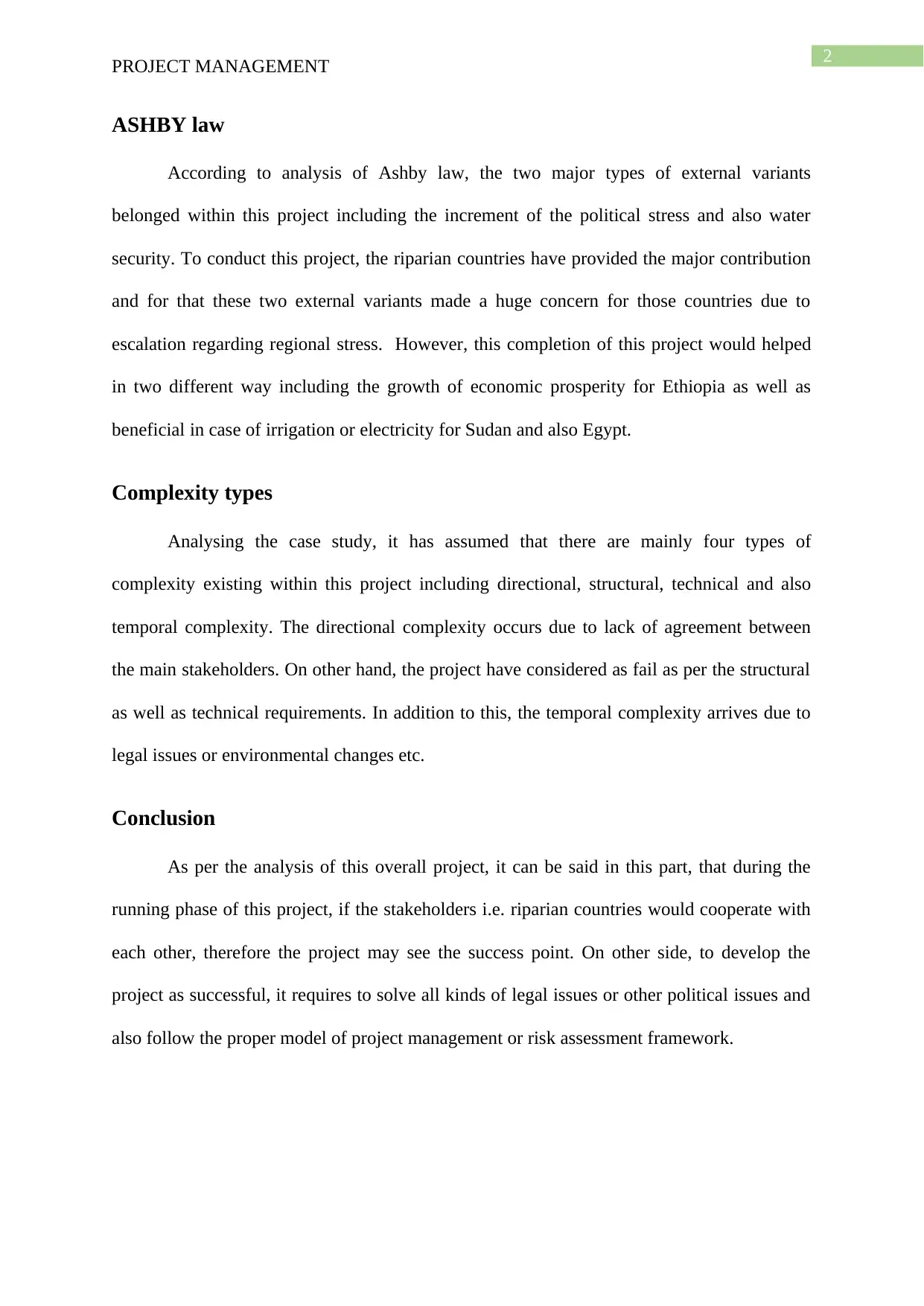University Project Management Report: GERD Dam Project Analysis
VerifiedAdded on 2022/09/26
|3
|589
|23
Report
AI Summary
This report analyzes the GERD Dam project, a hydroelectric power infrastructure project on the Nile River, focusing on the complexities that led to delays. It identifies five key complexity factors, including conflicts among riparian countries, lack of seismicity testing, absent project risk management, negative assumptions, and the absence of a basic project management model. The report also discusses ICCPM outcomes such as lack of collaboration, unsuccessful risk planning, and political tensions. Applying Ashby's Law, the analysis highlights external variants like political stress and water security. The study identifies four types of complexity: directional, structural, technical, and temporal. The conclusion emphasizes the need for stakeholder cooperation, resolution of legal and political issues, and adherence to project management and risk assessment frameworks to ensure project success.
1 out of 3







![[object Object]](/_next/static/media/star-bottom.7253800d.svg)